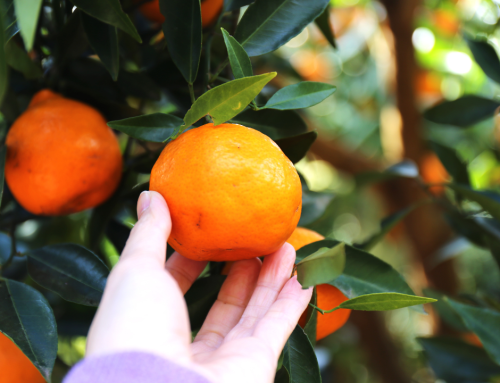Fruit fly activity
Fruit fly begin to build up in peri-urban and rural locations across the Goulburn Murray Valley during February. It is common for fruit fly to move out of urban areas and into rural locations at this time due to the irrigated conditions and mass-ripening of fresh fruit in rural areas.
February action
It is recommended commercial growers monitor and remove all unwanted fruiting plants within 1km of orchards, paying particular attention to roadside feral fruits and nearby plants along creek banks, Crown land, abandoned orchards and house yards. These fruit are the staging points for a rapid increase in fruit fly populations that can threaten crops.
Commercial orchards within 1km of hot spot locations mentioned below should be on high alert and extra vigilance is advised. Trapping and regular inspection of fruit is essential in these areas.
Action for commercial orchardists:
- Ensure fresh traps are deployed regularly and checked as often as possible (once a week).
- Check ripe and ripening fruit for fruit fly sting marks – preferably daily.
- If fruit fly is an ongoing problem ensure supplies of control material such as baits and approved pesticides are in storage and within use-by dates.
Fruit fly locations
Trapping sites registering fruit fly over the last month through the regional trapping grid include:
• Avenel • Kyabram • Shepparton
• Barooga • Merrigum • Strathmerton
• Congupna • Mooroopna • Tungamah
• Echuca • Numurkah • Wunghnu
• Yarrawonga
Exotic pest fruit flies
While Victoria is free from these exotic pest fruit flies, increased awareness of the potential threat they pose is important in protecting the region. Awareness is recommended around the following exotic pest fruit flies:
Mediterranean fruit fly [Medfly] (Ceratitis capitata) – not present in Victoria. This pest also attacks most fruit and fruiting vegetables. More information on Medfly, click here or visit the Agriculture Victoria website.
Spotted wing drosophila (Drosophila suzukii) – not present in Australia. Attacks all berries (including grapes) and most pome and stone fruit. For more information on spotted wing drosophila, click here or visit the Plant Health Australia website.
Oriental fruit fly (Bactrocera dorsalis) – not present in Australia. Attacks more fruits and vegetables than Qfly and Medfly and is a major impact pest. For a general discussion on exotic pest fruit flies, click here or visit the Department of Agriculture, Water and the Environment
Olive fly (Bactrocera oleae) – not present in Australia. The olive fly is the number one pest in olives grown around the Mediterranean. It has invaded and established in the USA and is highly invasive. For more information on Olive fly, click here.
For more information about Agriculture Victoria’s Fruit Fly Strategy 2021-2025 click here, or visit the Agriculture Victoria website.
For more information about exotic pest fruit flies, contact the GMV Regional Fruit Fly Office on (03) 5871 9222.




